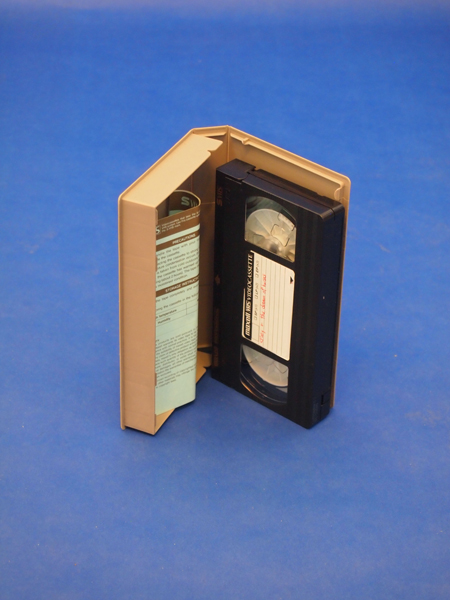![]() body | color | collections | commodity | cube | document | fabric | fetish | gender | glass | home | identity | living | machine | metal | minimal | mobility | narrative | olfactory | organic |
body | color | collections | commodity | cube | document | fabric | fetish | gender | glass | home | identity | living | machine | metal | minimal | mobility | narrative | olfactory | organic |
![]() pain | paper | plastic | plugs | power | protective | rectangular | ritual | round | sound | souvenir | spiritual | style | text-based | time | tool | touch | uniform | value | visual | warm | wood
pain | paper | plastic | plugs | power | protective | rectangular | ritual | round | sound | souvenir | spiritual | style | text-based | time | tool | touch | uniform | value | visual | warm | wood
| VHS: Judy and the Dream of Horses | |||
Narrative: The VHS cassette is a 187 mm wide, 103 mm deep, 25 mm thick plastic shell held together with five Phillips head screws. Petroleum refineries; Power generation and supply; Plastics material and resin manufacturing; Coal mining; Alumina refining and primary aluminum production; Other basic organic chemical manufacturing; Oil and Gas extraction; Motor vehicle parts and manufacturing; Truck transportation; Oil and gas extraction; Iron and steel mills. Land use includes: Logging; Forest nurseries, forest products, and timber tracts; Cattle ranching and farming; Judy and the Dream of Horses is a video I made in Manchester CT in 1998 while attending Manchester Community Technical College. A VHS video camera was borrowed from the school. Natural lighting and two actors made up a five minute video. Titles made with typewriter purchased used from a thrift store in Enfield CT with a ribbon in tact, and 8.5 x 11" blank paper . The paper was made from pulp obtained by chemical means, known as kraft pulping. Chips of wood were placed in a large, sealed container known as a digester. The digester contained a strongly alkaline solution of sodium hydroxide and sodium sulfide. Bleaching removes lignin and involves mixing the pulp with a series of oxidizing chemicals that react with the lignin. After each mixture, the pulp was washed with an alkaline solution that removes the treated lignin. Fillers were added to the pulp. (A typical filler is a clay known as kaolin. Other chemicals often added to pulp include starches or gums. Rosin and alum are often added as sizers, making the paper less absorbent.) Pulp was added to water to form slurry in order to make paper with an even density. The slurry was pumped onto a moving mesh screen made up of very fine wires of metal or plastic. Water drained through the small openings in the mesh, and formed a sheet of wet material from the slurry. The sheet was moved on a series of belst made of felt containing wool, cotton, and synthetic fibers. The dried sheets moved between rollers known as calendars to make it smooth. This videotape has traveled with me from Manchester CT to Boston MA to Portland OR to New Haven CT to New York City.
|
 |
||
![]()
